1
Bob Leighton on early agriculture10 June 1996
Oliver, British Columbia, Canada
 Credits:
Credits:Leighton, Bob
2
Mr. Henry Parsons picking cantaloupe20th Century, Circa 1924
Oliver, British Columbia, Canada
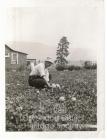 Credits:
Credits:Parsons, Henry
3
Irrigation in the southern Okanagan was originally controlled by the provincial government. Their station in Oliver, the Southern Okanagan Lands Project office, served as a control point for operations in the Oliver-Osoyoos area until 1964.4
Southern Okanagan Lands Project Office20th Century, Circa late 1920's
Oliver, British Columbia, Canada
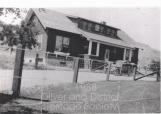 Credits:
Credits:Rienhart, Edith
5
In 1922, with the establishment of West-Kootenay power, the availability of electricity became a reality, and pumphouses could be installed to draw water to the higher benchland of the valley. The thorough irrigation of the valley, coupled with acres of viable farm land brought more and more people to settle at the Oliver townsite. As more people came to cultivate the land, businesses popped up, hoping to cash in on the farmers' need for general commodities.6
Oliver Cash Store, unidentified men20th Century, Circa 1921
Oliver, British Columbia, Canada
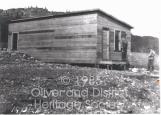 Credits:
Credits:Mrs. Mabee, George
7
Would-be orchardists who came to the Okanagan faced the trouble of growing trees, and most would take three to five years before bearing fruit. To maintain the productivity of their land, agriculturalists in the Oliver area planted dozens of row-crops, including tomatoes, peppers, and cantaloupe.8
Tait Orchard, crops between the young trees20th Century, Circa 1920's
Oliver, British Columbia, Canada
 Credits:
Credits:Dickson, Stanley
9
In combination with the new bountiful water supply, Oliver's long growing season and sunny summers provided a superb environment for growing fruits and vegetables. Cantaloupe from Oliver quickly established a market reputation for its quality and sweet flavour. Each acre of land yielded between 150 and 200 packed crates of cantaloupe, valued at about $1.54 per crate.10
Standing in front of a building20th Century, Circa 1920's
Oliver, British Columbia, Canada
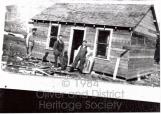 Credits:
Credits:Bettison, Muriel
11
While many farmers grew row and ground crops in the years preceding tree fruit harvests, some people attempted to grow tobacco fields. The crop and harvest were moderately successful, but massive, pre-existing export operations in Ontario generated prohibitive competition, and most tobacco grown in the Okanagan was sold locally. Much of it, however, could not be sold, and farmers were forced to destroy entire years' worth of crop because of it's low market value.12
Tobacco-growing in the Okanagan20th Century, Circa 1920
Oliver, British Columbia, Canada
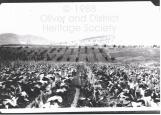 Credits:
Credits:Hunter, Ivan
13
Other ventures proposed by the Liberal party, as both a source of income before tree fruits would actually start producing fruit and as incentive to interested settlers, included ranching, poultry, bee-keeping, and seed-growing. Some lands were also used to grow alfalfa or hay to supplement the older ranching market, valued between $50 and $120 per acre, with up to four cuttings made anually.14
Photo of Carr fields and house20th Century, Circa late-1920's
Oliver, British Columbia, Canada
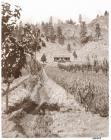 Credits:
Credits:Kelowna Photo Bank